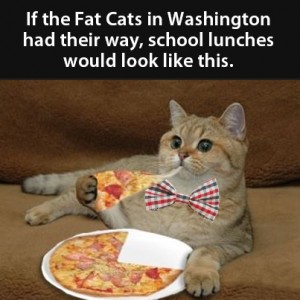FDA caves in to lobbying pressures, delays menu labeling
Yesterday, the FDA announced a delay in implementation of menu labeling until December 1, 2016.
Since the FDA issued the menu labeling final rule on December 1, 2014, the agency has had extensive dialogue with chain restaurants, covered grocery stores and other covered businesses, and answered numerous questions on how the rule can be implemented in specific situations. Industry, trade and other associations, including the grocery industry, have asked for an additional year to comply with the menu labeling final rule, beyond the original December 2015 compliance date. The FDA agrees additional time is necessary for the agency to provide further clarifying guidance to help facilitate efficient compliance across all covered businesses and for covered establishments to come into compliance with the final rule. The FDA is extending the compliance date for the menu labeling rule to December 1, 2016, for those covered by the rule.
Here are the relevant Federal Register notices:
- Federal Register Notice for the Compliance Date Extension
- Menu and Vending Machines Labeling Requirements
Let’s be clear about what’s going on here. New York City, where I live, has had menu labeling since 2008. The world has not come to an end.
The Affordable Care Act made menu labeling go national in 2010. The Supreme Court affirmed that law in 2012.
The seemingly endless delays look like successful lobbying at the expense of consumers and public health.
The New York Times account quotes me on this point:
This is a huge victory for the restaurant lobbyists,” said Marion Nestle, a professor in the department of nutrition, food studies and public health at New York University. “Food companies must be hoping that if they can delay menu labeling long enough, it will just go away.
The pizza industry, one of the chief lobbying groups on this issue, is pleased by the decision. Lynn Liddle, Chair of the American Pizza Community sent out this statement yesterday:
FDA’s delay confirms both the serious deficiencies in the final rules and the urgent need for enactment of the bipartisan Common Sense Nutrition Disclosure Act (H.R. 2017). Unfortunately, FDA proceeded with an approach to final rules that impose significant compliance costs without achieving any meaningful improvements in consumer education. After years of uncertainty, FDA still has not addressed basic questions regarding implementation. The American Pizza Community looks forward to continuing to work with Members of Congress to secure timely passage of the Common Sense Nutrition Disclosure Act.
If you can’t get federal agencies to back off on public health, go right to Congress.
The pizza industry had already succeeded in getting this provision in the House Agricultural Appropriations bill:
SEC. 744. None of the funds made available by this Act may be used to implement, administer, or enforce the final rule entitled ‘‘Food Labeling; Nutrition Labeling of Standard Menu Items in Restaurants and Similar Retail Food Establishments’’ published by the Food and Drug Administration in the Federal Register on December 1, 24 2014 (79 Fed. Reg. 71156 et seq.) until the later of— (1) December 1, 2016; or (2) the date that is one year after the date on which the Secretary of Health and Human Services publishes Level 1 guidance with respect to nutrition labeling of standard menu items in restaurants and similar retail food establishments.
Although this act is not yet passed and it’s not clear whether this provision would have survived, the FDA got the message (or maybe the White House made sure that it did?).
Menu labels inform the public about the number of calories in the foods they are buying.
The ferocity of lobbying on this idea suggests that restaurant companies would rather you did not have this information.
The FDA, alas, is not helping much on this one.




